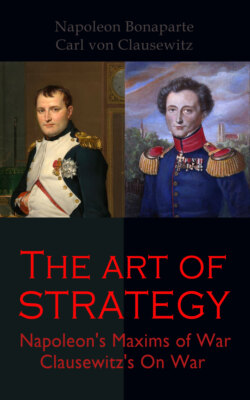Читать книгу The Art of Strategy: Napoleon's Maxims of War + Clausewitz's On War - Carl von Clausewitz - Страница 57
На сайте Литреса книга снята с продажи.
ОглавлениеMAXIM LII.
Table of Contents
Artillery is more essential to cavalry than to infantry, because cavalry has no fire for its defence, but depends upon the sabre. It is to remedy this deficiency that recourse has been had to horse-artillery. Cavalry, therefore, should never be without cannon, whether when attacking, rallying, or in position.
NOTE.
Horse-artillery is an invention of Frederick. Austria lost no time in introducing it into her armies, although in an imperfect degree. It was only in 1792 that this arm was adopted in France, where it was brought rapidly to its present perfection.
The services of this arm during the wars of the Revolution were immense. It may be said to have changed to a certain extent the character of tactics, because its facility of movement enables it to bear with rapidity on every point where artillery can be employed with success. Napoleon has remarked in his memoirs that a flanking battery which strikes and rakes the enemy obliquely, is capable of deciding a victory in itself. To this we may add that, independent of the advantages which cavalry derives from horse-artillery in securing its flanks, and in opening the way for a successful charge by the destructiveness of its fire, it is desirable that these two arms should never be separated, but ready at all times to seize upon points where it may be necessary to employ cannon. On these occasions, the cavalry masks the march of the artillery, protects its establishment in position, and covers it from the attack of the enemy, until it is ready to open its fire.
